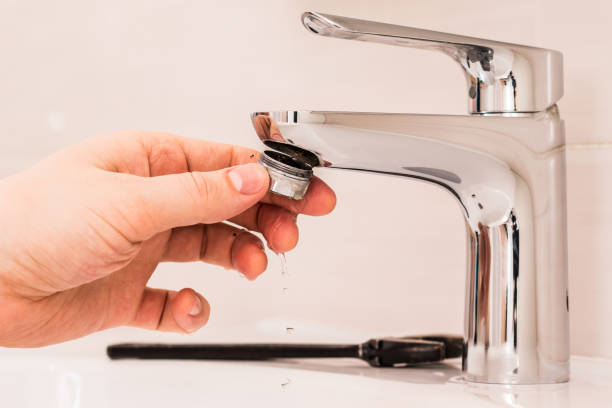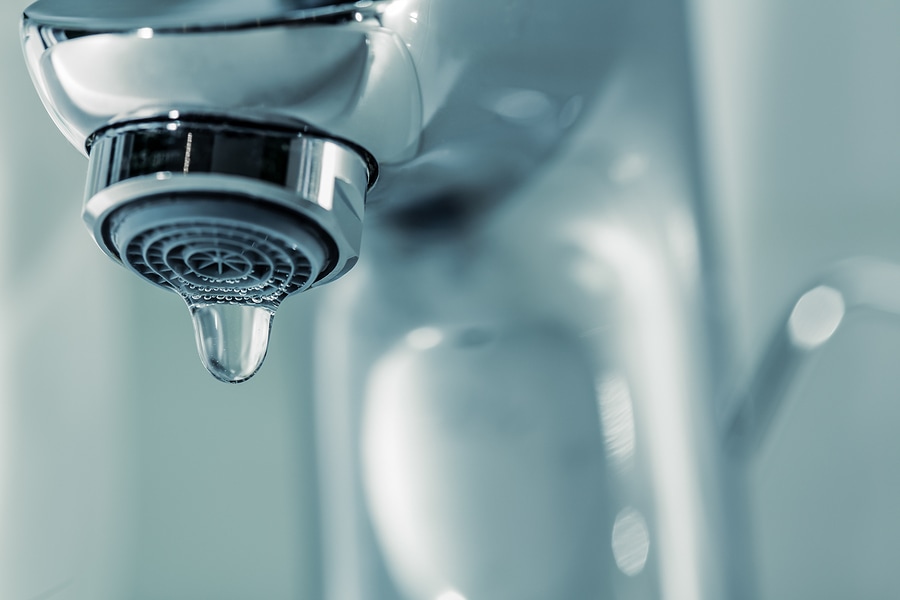Just about every person may have his or her own perception about Water Dripping from Faucet: Why and How to Fix.

Trickling taps could appear like a small aggravation, yet their impact exceeds just the inconvenience of the sound. From drainage to incurring unnecessary monetary costs and health threats, neglecting a leaking tap can lead to various repercussions. In this post, we'll look into why it's vital to address this common home concern immediately and successfully.
Wastefulness of Water
Environmental Impact
Trickling faucets contribute dramatically to water wastefulness. According to the Environmental Protection Agency (EPA), a solitary tap trickling at one drip per second can squander greater than 3,000 gallons of water per year. This not just strains water sources but additionally impacts environments and wildlife based on them.
Step-by-Step Guide to Taking Care Of a Dripping Faucet
Tools Needed
Before trying to fix a dripping tap, gather the necessary tools, consisting of an adjustable wrench, screwdrivers, substitute parts (such as washing machines or cartridges), and plumber's tape.
Typical Faucet Issues and Their Solutions
Recognize the type of faucet and the particular problem triggering the drip. Usual problems consist of damaged washing machines, corroded shutoff seats, or defective O-rings. Describe maker guidelines or on-line tutorials for detailed assistance on repairs.
Financial Prices
Enhanced Water Costs
Past the environmental impact, trickling taps can pump up water costs significantly. The built up wastage with time equates right into greater utility expenses, which can have been stayed clear of with prompt fixings.
Possible Building Damages
Furthermore, long term dripping can cause harm to components and surfaces surrounding the faucet. Water buildup can trigger staining, rust, and even architectural concerns if left unattended, causing additional repair service expenses.
Health Concerns
Mold and Mold Growth
The constant visibility of dampness from a trickling faucet creates an ideal setting for mold and mold growth. These fungis not just endanger interior air top quality but additionally present health threats, especially for individuals with breathing conditions or allergies.
Waterborne Diseases
Stationary water in trickling taps can end up being a breeding place for bacteria and various other microorganisms, raising the risk of waterborne conditions. Impurities such as Legionella microorganisms grow in stationary water, potentially resulting in major health problems when ingested or inhaled.
Do it yourself vs. Specialist Repair work
Pros and Cons of Do It Yourself Fixing
While some might try to repair a trickling tap themselves, do it yourself repairs feature their very own collection of challenges. Without appropriate expertise and devices, do it yourself efforts can intensify the issue or cause incomplete repair work, prolonging the trouble.
Benefits of Working With a Professional Plumber
Hiring an expert plumber makes sure that the underlying reason for the dripping faucet is resolved effectively. Plumbings possess the experience and tools to detect and fix tap issues successfully, saving time and reducing the threat of additional damages.
Environmental Duty
Specific Payment to Preservation
Taking obligation for repairing trickling taps aligns with more comprehensive efforts towards water preservation and environmental sustainability. Every person's actions collectively make a significant influence on maintaining precious resources.
Sustainable Living Practices
By prioritizing timely repairs and taking on water-saving habits, people add to lasting living methods that benefit both existing and future generations.
Preventive Measures
Regular Upkeep Tips
To stop dripping taps, carry out routine upkeep such as cleaning up aerators, inspecting for leakages, and replacing damaged parts promptly. Furthermore, consider setting up water-saving devices or upgrading to a lot more reliable fixtures.
Significance of Prompt Fixes
Attending to dripping faucets as quickly as they're discovered avoids additional water waste and potential damages, ultimately conserving both water and money in the future.
Effect On Residential Or Commercial Property Worth
Understanding of Well-Maintained Building
Preserving a property in good condition, including attending to maintenance issues like dripping taps, improves its perceived worth and charm among prospective purchasers or tenants.
Influence on Resale Worth
Residences with well-kept plumbing fixtures, including taps, command greater resale values in the real estate market. Addressing trickling faucets can add to a favorable impression during home examinations and negotiations.
Conclusion
Dealing with a dripping faucet exceeds simple benefit; it's a crucial action toward conserving water, minimizing financial expenses, and securing wellness and building. Whether via do it yourself repairs or expert aid, doing something about it to take care of dripping taps is a tiny yet impactful means to advertise responsible stewardship of resources and contribute to a much healthier, a lot more sustainable future.
How to Fix a Leaky Faucet: Step-by-Step Repair Guide
A leaky faucet may seem like a simple annoyance, but if it's not fixed promptly, that leak could cost hundreds to potentially thousands. From water damage to mold, mildew, and high water bills, even a tiny leak can be catastrophic if left unattended. Damage like this can even affect the overall value of your home, so it's important to take the right approach for leaky faucet repair. You may need the help of a plumber in some cases, but we've got a few tips you can try on how to fix a leaky faucet before calling the pros.
Four Faucet Types
When you're learning how to fix a leaky faucet, the first step is knowing what kind of faucet you're working with! There are four common types.
Cartridge Faucets
Cartridge faucets come in one- or two-handled varieties. In one-handled cartridge faucets, hot and cold water combines in a single cartridge. In the two-handled versions, hot and cold water are controlled separately and mixed in the faucet.
Ball Faucets
Ball faucets have a single lever you push up and down to adjust the pressure and rotate to change the temperature. A slotted metal ball controls the amount of water allowed into the spout.
Compression Washer Faucets
They're the oldest type of faucet, but they're still used in many homes — especially older ones. Compression faucets have two separate handles that, when turned, raise or lower the washer that seals a water valve. This valve stops water from flowing through the faucet when it is turned off.
Disc Faucets
Disc faucets rarely need to be repaired due to their maintenance-free design. The water flow is controlled by two discs — the upper one raises and lowers against a fixed lower disc, creating a watertight seal. If your disc faucet starts leaking, you may need to replace the seals or clean residue buildup from the inlets.
Fixing a Leaky Faucet
Step 1: Turn Off the Water
Whether you're learning how to fix a leaky bathtub faucet or how to fix a leaky kitchen faucet, always turn off the water supply to your working area when you're fixing a leak. The last thing you want is a flood added to your list of things to fix.
Look for the shutoff valves below your sink or around the tub and turn them clockwise to stop the water flow. If your faucet doesn't have shutoff valves, you may need to turn off the water for the whole house. Check to make sure it's off by turning the faucet on. If nothing comes out, you're ready to start the repair.
Step 2: Take Apart the Faucet
How you disassemble your faucet depends on the type of fixture you have. You can use a flathead screwdriver to remove the caps on top of the handle or handles for cartridge and compression faucets. Inside, you should see handle screws. Unscrew these with a screwdriver to remove the handle.
Disc- and ball-style faucets will typically have an inlet screw near the handle, and removing that will reveal the interior of the faucet.
Detach the Valve Stem
For cartridge- and compression-style faucets, you'll see the inner valve stem or cartridge once you remove the faucet handles. If you have a compression faucet, unscrew the brass valve stem. If you have a cartridge faucet, pull out the cartridge. If your cartridge has been in place for a while, it may require some tools or extra force to remove it due to mineral deposits.
Examine and Replace Parts
Once you've removed the parts, check them out to confirm what needs to be replaced. You may see corroded rubber washers, O-rings, stems, or cartridges. On a ball-style faucet, check the seats and springs for damage.
If you need to repair a leaky disc faucet, check the inlet and seals on the lower disc.
Once you determine what parts must be replaced, visit your local hardware store. Bring the damaged parts with you to ensure you can purchase the correct components to replace them.
Clean Valves and Faucet Cavity
If you've removed a stem or cartridge, you may notice mineral buildup in the faucet's threads. Use white vinegar to clean the valve seat by soaking it for a few minutes, then scrub it away with a soft toothbrush and rinse with warm water. You can also clean the interior of the faucet in the same way.
Reassemble the Faucet
Once your faucet is cleaned and the required parts have been replaced, it's time to reassemble it. Put the pieces back together and slowly turn the water supply back on. Doing this slowly is crucial because too much initial water pressure can damage the new hardware you've just installed.
https://homewarranty.firstam.com/blog/how-to-fix-leaky-faucet

I have been very intrigued by and I'm hoping you liked my piece. Sharing is nice. Helping others is fun. Thanks a bunch for being here. Come back soon.
Comments on “Understanding the Significance of Fixing a Malfunctioning Faucet”